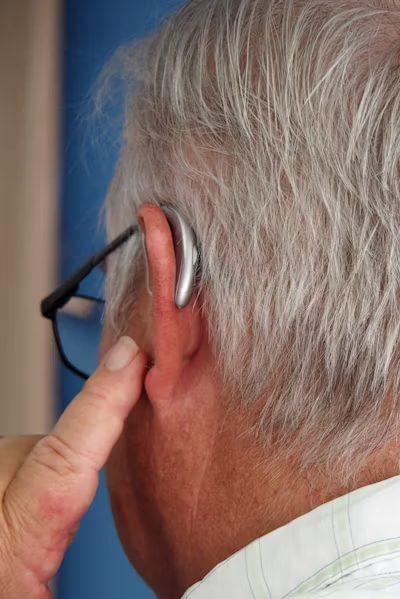Across Australian sectors—manufacturing, logistics, civil construction, and mining—hearing tests have settled into the daily rhythm of health checks. Workers submit to audiometric assessments because Work Health and Safety (WHS) rules require it, and the aim is to keep noise-induced hearing loss from becoming permanent.
The trouble is that the tests identify a problem only after it has started. They deliver a number that confirms whether damage is already done, not whether it can still be prevented. Unless audiometric tests are paired with real-time monitoring of the noise that surrounds workers throughout the shift, they let the risk walk out the door rather than confronting it on the shop floor that minute.
Getting ahead of this challenge requires more than scheduling more frequent tests. Employers must connect each worker’s hearing history with the noise map of the workplace: where, when, and how the sound exposures stack up. Audiometric results and environmental noise monitoring should inform one another, forming a continuous, two-way dialogue rather than two separate agendas. Treat the hearing assessment and the environmental monitoring as interlinked, and the company will not only comply with regulations; it will prevent harm and invest in the long-term health of its workforce.
Missing the Full Picture: Why Audiometry Alone Falls Short
Sure, workplace hearing tests are important, but they simply alert you that hearing has changed—nothing more. They don’t clarify why the shift has happened, when the loudest noise reached the ear, or the exact conditions that led to the decline. For example, if a worker’s results show early loss, the test leaves you guessing about the cause. Was there a single loud event,like a metal saw running across a hard table? Was hearing protection worn, but gloves that made the earmuffs fit poorly? Did a machine’s lowered dBA rating somehow let noise creep back in? Or did the labeled rating simply underestimate the spike in an isolated aisle or during a late-night shift?
Environmental noise monitoring closes that gap. It logs exposure in real time, linked to the exact task being done, so the data arrive with time stamps and location codes. Pair that with audiometry, and you turn raw numbers into a story: the test shows a dip, the log shows an hour when the worker sliced aluminum with an old cold saw operating just outside the sound enclosure, and the log for that saw shows that maintenance forgot to replace worn dampeners. Suddenly, the “failed” dBA rating, the missing plug in the wall, and the worker’s habit of leaning the earmuffs onto the shelf are confirmed. HSE teams don’t just react; they target, verify, and nip the problem in the bud.
The Compliance Mirage: When Monitoring and Testing Speak Different Languages
Too often in Australian industries, noise monitoring is a checkmark done at the least cost: a one-day walk-through when a new plant starts, a rushed read when a worker yells, or once every three years when the auditor shows up with the red pen. Audiometric tests are punctual—for now—show up every two years, set up on a calendar and carried out with flip charts and reminder emails. But because the test data seldom links back for a follow-up log entry, no one compares the two sets of numbers.
The finalized audiogram gets filed, the newcomer’s sound map gets laminated, and the aisle outside packing, the one with saws sharing power, the one with unmarked shift moves, gets the same piece of plastic: “Nit in wala” tape. The illusion of protection is the loudest silence of all. Threads are borrowed, tapes are scribbled: “compliant, compliant, compliant” the sheet goes. Left in the logbook, the log and the hearing test seal a promise that never was.
This gap makes everything look fine on paper: you check off the noise-monitoring task, and then you check off the hearing test, and it seems safe. But the two reports never compare notes, so nothing real is learned. Because of this, companies feel confident their protections are strong, even while the fog of early hearing loss is creeping in. That damage can slip by undetected for months, leaving you unable to turn it back.
When you connect the dots—feeding noise-level data straight into the hearing test records—you get a clearer view of the workplace risk. If the levels on the monitor are green but the test scores are dropping in the same area, the control is still a paper tiger. This real-time link shows whether the protective gear, the signage, and the scheduling are actually doing their jobs, not just looking good in the safety manual.
A New Model: Linking Data Streams for Smarter Health Protection
What would a modern health protection model look like? A good example combines connected data streams:
– Environmental noise records are tagged to specific tasks, gear, and workspace zones.
– Individual audiometric records are layered by role or team, spotting exposure-response trends.
– High-noise zones are flagged where engineering and PPE rules break down.
– Pre-emptive actions, like altering PPE fit, rotating shifts, or quick staff re-training, are triggered to prevent irreversible harm.
– Exposure insights inform buying and servicing choices, not just periodic health reports.
Thanks to today’s low-cost sensors and cloud software, we can now capture noise levels in real time and link them directly to personal hearing results. For example, if forklifting staff on a certain shift show rising hearing loss, a noise review may trace the problem to early-morning load racks with weak acoustic shielding and spotty PPE use.
Regulators Are Watching — and Expecting More
WHS authorities in Australia are pivoting to data-based compliance, especially for health issues like gradual hearing loss. Safe Work Australia’s updated Noise at Work code states clearly: noise exposure must be measured, worker hearing tracked, and controls must be regularly tested and revised based on what the data shows.
When businesses view audiometry and environmental monitoring as separate checkboxes for compliance, they risk being seen as merely reactive and fragmented in their safety strategy.
On the other hand, employers that routinely link hearing test outcomes with exposure records and recalibrate their controls accordingly not only satisfy regulators but also position themselves as leaders in workplace health.
ESG and Worker Wellbeing: More Than WHS Compliance
Integrating hearing assessments with environmental data delivers advantages that extend far beyond compliance. In the ESG-focused marketplace, worker wellbeing has become both a reputational and an operational asset.
Clients, investors, and talent expect evidence that safety is lived rather than no more than statement. When organisations document that hearing protection is part of a dynamic, data-driven process, they reinforce their overall safety culture and governance.
This capability can influence contract awards, strengthen employer branding, and support long-term risk reduction initiatives, particularly within infrastructure, defence, energy, and logistics sectors.
Conclusion: Hear the Risk Before the Damage Is Done
Workplace hearing tests are a vital part of the safety puzzle—but they can’t work in isolation. When audits of ambient noise levels are missing, those tests turn into a rear-view mirror of damage done, instead of a shield against it.
In the evolving safety scene of Australia, the smartest move is ensuring the roar workers hear out on the floor lines up with the data the audiometer clicks out. This fusion guards them today and primes the safety system tomorrow, making each risk look like a signature on the contract of real work, not a line in a policy book.
The test score the site should aim for is the steady 10/10 that doesn’t move. That stillness is earned only when noise is clocked, translated into action, and shut off before it gets a chance to score a mark on the ear it cannot unring.











